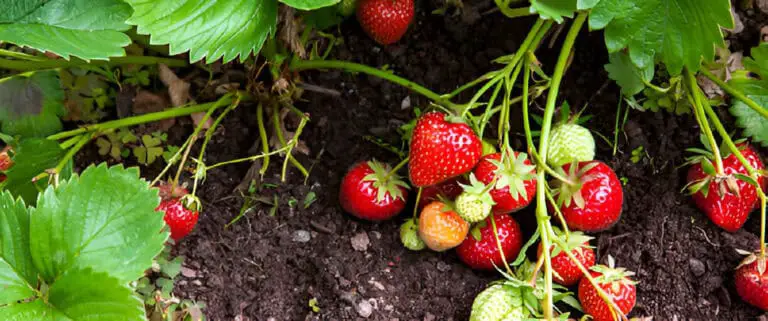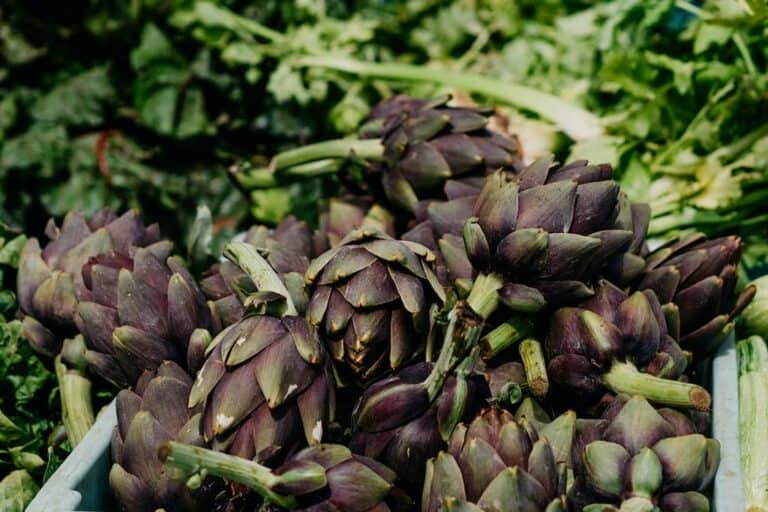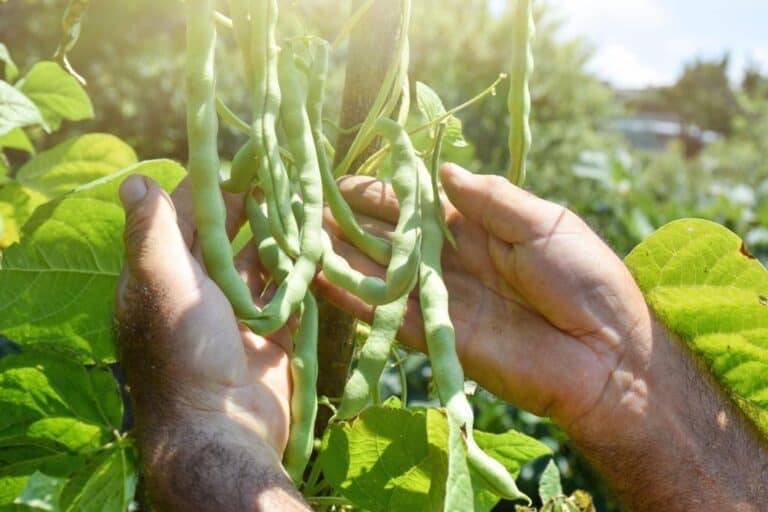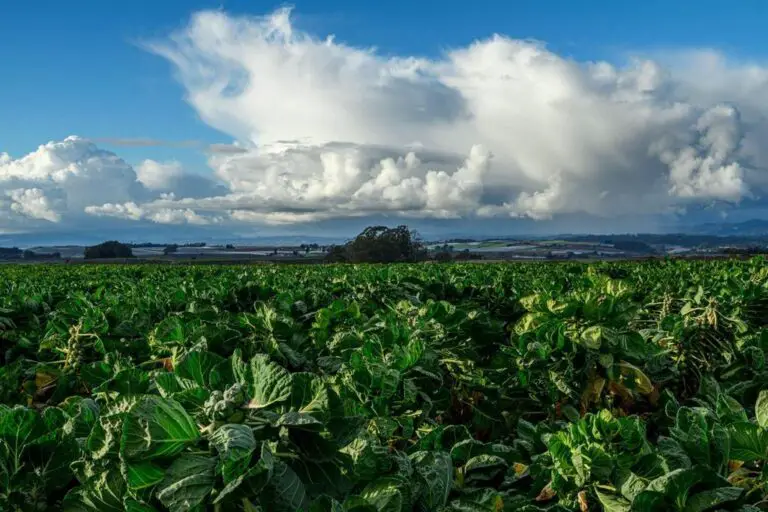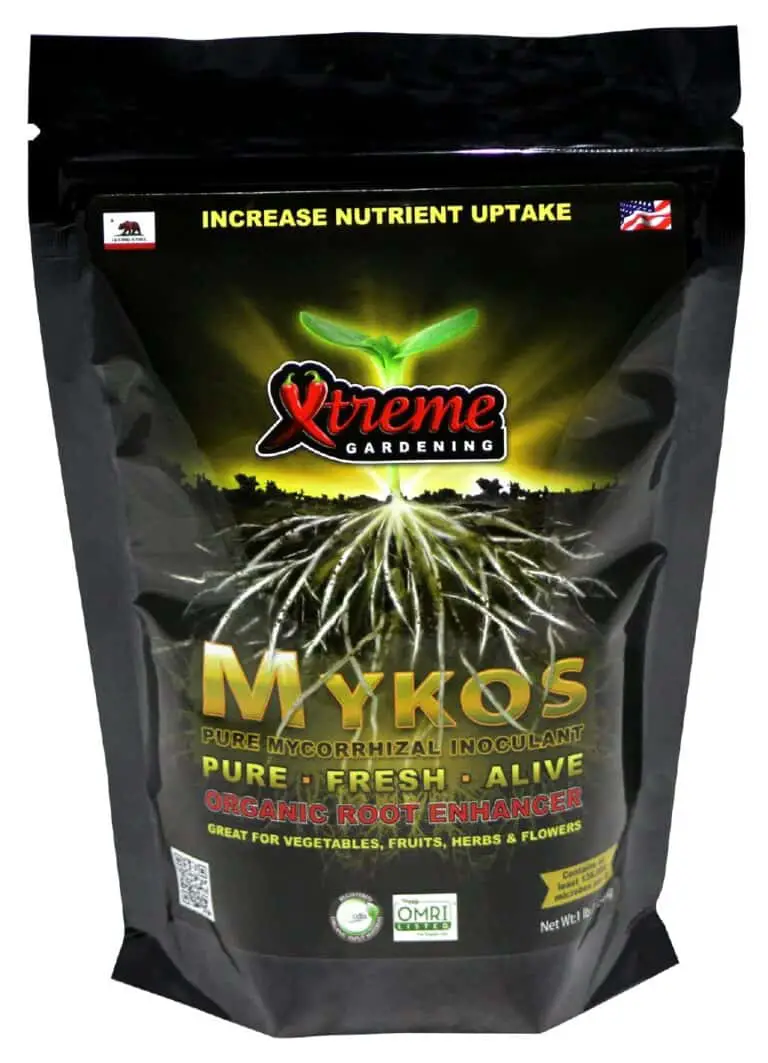How Many Cucumber Per One Plant Produce? (Varieties and Their Yields)
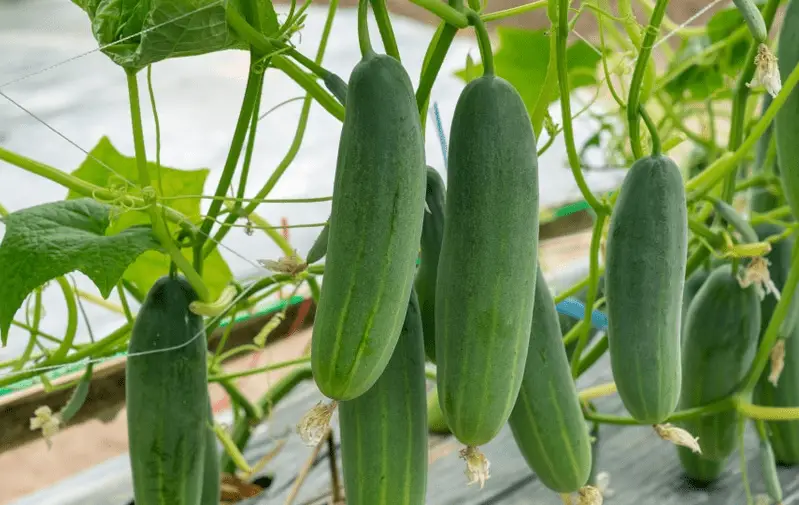
Are you tired of having a lackluster cucumber yield in your garden? Look no further! This guide will give you all of the information and tips you need to grow the best cucumbers.
From understanding the factors that affect cucumber growth to the average yield per plant and best practices for planting and caring, you’ll be a cucumber-growing pro in no time. In this article, we will explore this topic and also provide information on how to get the most cucumbers from your plants.
This guide will tell you everything you need to know about how to get the most cucumbers from your plants by knowing how many cucumbers each plant can make. We’ll talk about the most important things that affect cucumber growth, like the weather, the soil, the water, and the fertilizer.
So, how many cucumbers per plant can produce? In general, cucumber plants can produce 10 fruits per plant, although this number can reach as high as 20 under rare circumstances.
We’ll also talk about the best ways to plant and take care of cucumber plants, as well as pruning and training tips and how to spot and fix common problems that can hurt cucumber production.
So, let’s get started and learn the secrets to maximizing cucumber yield and finding out just how many cucumbers one plant can produce.
Overview of Cucumber Plants and Yield
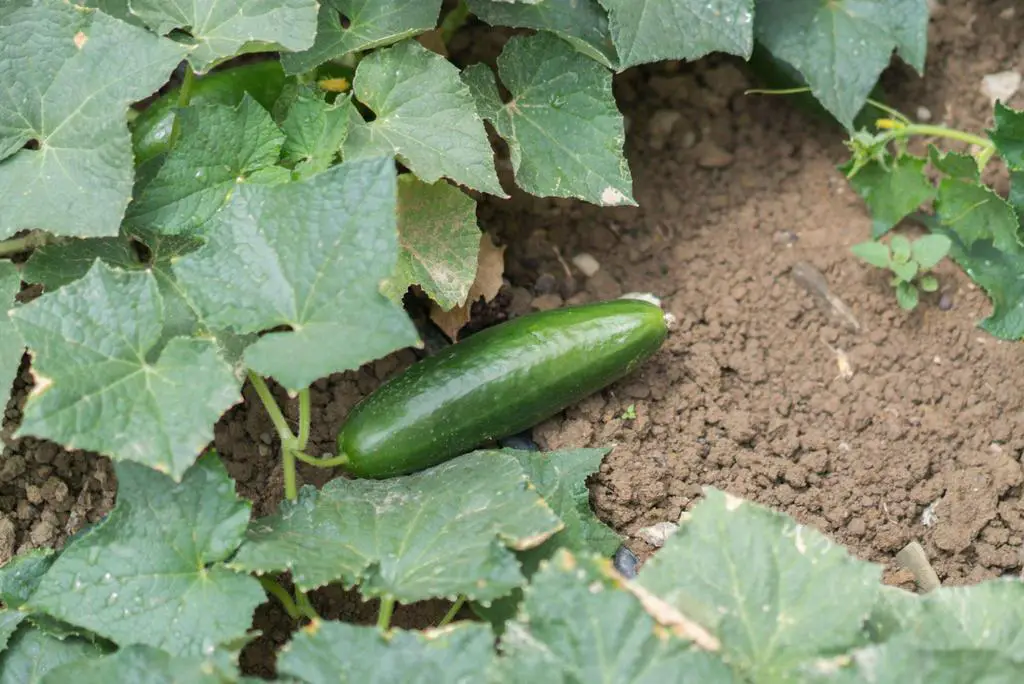
Cucumbers are a popular vegetable that can be grown both inside and outside. They are a warm-weather crop and easy to grow without needing a lot of care. Cucumber plants grow long, green, slender fruits and require warm soil to sprout as well as flower pollination to bear fruit.
These tender annual plants come in a variety of shapes and sizes, including those that are good for slicing and pickling. There are numerous factors that affect the amount of fruit that each plant produces. It depends on the type of plant, the surrounding environment, and the care given to the plants.
Cucumbers are a popular vegetable that is easy to grow and can be enjoyed in a variety of dishes. However, many gardeners struggle to achieve a high yield of cucumbers from their plants.
Knowing what makes cucumbers grow and what the best ways to plant and care for them are can help you get more cucumbers from each plant.
| Also see: When to Plant Cucumber for Harvest? |
How Many Cucumbers Per Plant Produce?
The average number of cucumbers per plant is 10. It is important to note that this can vary depending on the type of cucumber plant, the variety of seed used, and the growing conditions. Some varieties of cucumbers, such as bush cucumbers, have a lower yield per plant, while others, such as vining cucumbers, can produce a higher yield.
The type of seed used can also affect the yield per plant. Heirloom varieties may produce less, while hybrid varieties are bred to have higher yields.
Climate and weather play a big role in determining the yield per plant. Cucumber plants require warm temperatures and at least 6 hours of direct sunlight per day to thrive. Extreme heat or cold, as well as drought or excessive rainfall, can negatively impact the yield.
Soil and watering also play a key role in determining the yield per plant. Cucumbers prefer well-draining soil with a pH between 6.0 and 7.0. They require consistent moisture to produce high yields, and waterlogged soil can lead to root rot.
Lastly, pollination is another crucial factor for cucumber yield. Cucumbers are typically self-pollinating, but in certain weather conditions, the plants may need a little help from bees or other insects to ensure proper pollination.
In general, a healthy cucumber plant will produce around 5 pounds of fruit in 2 to 3 months. However, this is an average estimate, and the actual yield per plant may vary depending on the factors mentioned above. It is crucial to keep in mind that the time of year, the plant’s care, and other environmental factors can also affect the yield per plant.
Cucumber Varieties and Their Yields
When diving into the world of cucumber cultivation, understanding the diverse range of cucumber varieties and their corresponding yield potential is crucial for a successful harvest. Let’s explore some popular cucumber varieties and the yields you can expect:
- Standard Green Cucumbers:
- Varieties like Marketmore and Straight Eight are known for reliable yields.
- Average yield: 5-10 cucumbers per plant.
- Slicing Cucumbers:
- Long and slender, varieties like Poinsett and Diva are favored for fresh consumption.
- Average yield: 4-8 cucumbers per plant.
- Pickling Cucumbers:
- Compact and ideal for pickling, Boston Pickling and National Pickling are popular choices.
- Average yield: 10-20 cucumbers per plant.
Choosing the right variety aligns with your gardening goals. For high production, go for prolific picklers, while those seeking long, crisp slicers should opt for slicing varieties. Ultimately, understanding these variations empowers growers to make informed decisions, ensuring a bountiful cucumber harvest.
The Ideal Spacing for Cucumber Plants and the Number of Plants per Area
The ideal spacing for cucumber plants and the number of plants per area are crucial factors in maximizing cucumber yield. Cucumber plants need a lot of room to grow and develop properly, as well as for light to reach them and air to flow around them.
Planting cucumbers too close together can lead to overcrowding, reduced yield, and increased susceptibility to disease.
When planting in a raised bed or garden, it is recommended to space cucumber plants at least 24-36 inches apart, with rows spaced at least 36-48 inches apart.
If growing cucumbers on a trellis or other vertical support system, the plants can be spaced closer together. The number of plants per area will depend on the size of the area and the spacing used. A general rule of thumb is to plant one cucumber plant per square foot.
When it comes to growing cucumber in greenhouse production, the spacing will vary depending on the type of system used. For example, in a high-wire system, the plants are spaced at a distance of 30 to 45 cm between plants and 60 to 90 cm between rows. However, in a low-wire system, the spacing will be different, where the plants are spaced at a distance of 45–60 cm between plants and 90–120 cm between rows.
Take note in greenhouse production, the spacing will also be affected by the type of cultivar used, as some varieties have a more vigorous growth habit than others.
Factors Affecting Cucumber Production
1. Climate
Cucumber plants thrive in warm temperatures between 60 and 95 °F (15 and 35 °C) and require at least 6 hours of direct sunlight per day. High humidity can cause issues such as powdery mildew and other fungal diseases. Therefore, it is important to ensure proper air circulation around the plants.
2. Soil
Cucumbers prefer well-draining soil with a pH between 6.0 and 7.0. The soil should be rich in organic matter and have a good balance of nutrients, such as nitrogen, phosphorus, and potassium. It is also important to ensure that the soil is not too wet, as this can lead to root rot.
3. Water
Cucumber plants require consistent moisture to produce high yields. It’s important to water cucumber often enough to keep the soil moist but not so wet that it can’t drain. To give the plants a steady flow of water, you can use a drip irrigation system or a soaker hose. It is also important to avoid overhead watering, as this can lead to fungal diseases.
4. Fertilizer
Cucumber plants require a steady supply of nutrients throughout the growing season. A balanced fertilizer with a ratio of 10-10-10 or 20-20-20 can be applied at planting time and then every 3–4 weeks during the growing season.
An additional application of a high-potassium fertilizer, such as 0-0-60, can be made when the cucumbers begin to form. It is also important to ensure that the fertilizer is not applied too close to the base of the plant, as this can burn the roots.
Preparing Soil Before Planting Cucumber
Before planting cucumbers, you need to choose a site that will provide your plants with elements that promote their growth.
The planting soil for cucumbers should be rich in nutrients, loose, structured, and fertile. You can make adjustments to improve the soil condition. A wet but well-draining (and not soggy) soil that is also warm is ideal. The addition of organic matter can help improve clay soil. You can add peat, compost, or rotten manure to deep, heavy soil to improve it.
When selecting soil, consider factors such as how much sunlight and the pH of the soil. Cucumbers need warmth and lots of light. Choose a location with at least six hours of direct sun each day for optimum growth. So make sure to place them in an area that receives plenty of sun.
They also like slightly acidic soil with a pH of 6.0–6.7. If your soil is not within this range, you can adjust it by adding lime or sulfur as needed.
In addition to sunlight, soil, and pH, you’ll also want to make sure the site has adequate water and good drainage. Cucumbers are thirsty plants and require 1-2 inches of water per week, either from rainfall or irrigation. Do not forget to water the plants frequently, especially during hot weather. Make sure the area where you’re planting has good drainage, so the soil doesn’t become waterlogged.
| See also: Should You Soak Cucumber Seeds Before Planting? |
How to Plant Cucumbers
Cucumbers are a vine plant that grows best in soils that are rich in organic matter, as we have explained above. The vines require plenty of space during the cucumber growth stage, so be sure to plant them in an area where they will have room to spread.
Below are some considerations when you plant your cucumbers for the best result:
- Depending on the type, plant seeds 1 inch deep and around 3 to 5 feet apart in a row (see seed packet for details). For trellis-trained vines, provide a 1-foot gap between each plant.
- Another way to plant cucumbers is to make small mounds, or hills, and plant two or three seeds in each mound. These mounds are spaced about 1 to 2 feet apart. Thinning them to one plant per mound after they reach 4 inches in height is recommended.
- Covering a hill or a row with black plastic will help warm the soil before planting if you live in a colder region.
- To keep pests away, mulch the area after planting with straw, chopped yellowing cucumber leaves, or another organic mulch, and keep shrub forms off the ground to avoid cucumber’s disease.
- A trellis is an excellent choice if you want the vine to climb or if your area is limited. The use of trellising also prevents the fruit from suffering damage from the wet ground. A trellis and other structures can support vegetable vines.
- If you have pests, cover cucumber seeds that have just been planted with row covers, netting, or a berry basket. This will keep the pests from digging out the seeds.
How Long Does a Cucumber Plant Start to Produce?
Cucumber varieties are broken down into two main types based on how they grow and how the cucumbers are used.
There are bushing and vining cucumbers that grow differently, and there are pickling and slicing cucumbers that are eaten differently. Some varieties can be used for both pickling and slicing.
A cucumber plant will produce for 3–12 weeks, depending on the variety. Pickling cucumber varieties will produce earlier but for a shorter time, around 2-4 weeks. Slicing cucumbers will start to produce a week or two after pickling cucumbers but will produce for longer periods, 4–12 weeks.
For any type of cucumber, harvesting at the right time is important to keep the plant producing for longer and increase cucumber yields.
When even one cucumber along a vine goes past its peak harvest time and gets big and starts to turn yellow, it sends hormonal signals to the rest of the plant that it has produced a mature fruit with mature seeds, and production will start to slow down and stop sooner than it would have if it’d been picked.
When to Harvest Cucumbers

Cucumbers are one of those summer fruits that you can’t wait to get your hands on. If you want to get the most out of a cucumber, you need to know how to harvest it at the right time. It’s only a question of when and how.
The ideal time to harvest cucumbers is when they are the size that you prefer. For those wanting to preserve their cucumbers, it’s best to pick them when the cucumber skin is still fairly firm and the seeds are not yet formed.
The most popular time to pick cucumbers is when they are hard and crunchy. You can also harvest them when the seeds begin to form and the skin becomes soft, or you can choose to wait until the cucumber has begun to grow in size.
TIPS ![]()
It is best to let cucumber plants mature before harvesting them. When they are ready, the fruit will be firm but not hard, and it will have grown substantially. If you plan to pick your cucumbers when they are ripe, it is best not to leave them on the vine for long periods of time. They will get soft and rot if you do.
If you have a large garden, you can harvest the cucumbers every two weeks. The owner of a smaller garden should pick them up every three to four weeks.
If you’re harvesting cucumbers in midsummer, you’ll need to harvest them two or three weeks after they’ve bloomed. If you’re harvesting cucumbers in midwinter, you’ll need to harvest them two or three weeks after the first frost.
The season can be extended if you start fresh plants in pots or sow seeds outside if the plants aren’t ready for harvest when you want them to be. Cucumbers need a long growing season, so they can be picked anywhere from 50 to 70 days after planting, depending on the type.
Final Thought
In conclusion, cucumber plants are a great vegetable to plant in your garden. Not only do they produce a lot in one single plant, but they are also relatively easy to grow. So, if you are looking for a productive and easy-to-grow vegetable to add to your garden, then consider planting cucumbers.
In general, cucumber plants can produce 10 fruits per plant, although this number can reach as high as 20 under rare circumstances. They are ready for harvest in 50 to 70 days, but you can pick them up earlier. If you want to preserve cucumbers after harvesting, it’s best to pick them when the skin is still fairly firm and the seeds are not yet formed.

